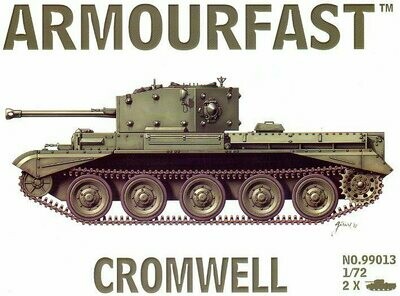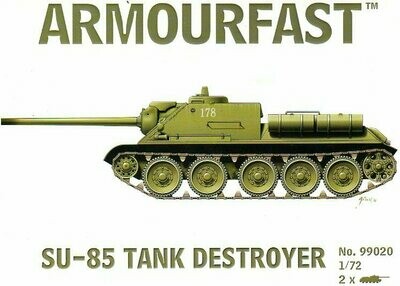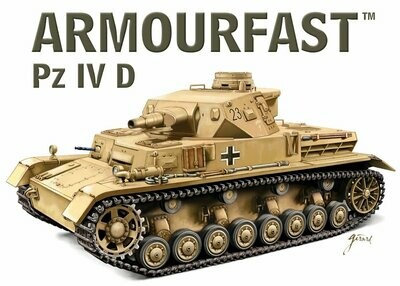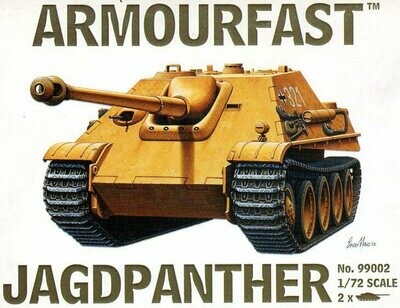Armourfast 99031 1/72 SU-100 Tank Destroyer
The SU-100 was a Soviet tank destroyer armed with a powerful 100 mm anti-tank gun. It was used extensively during the last year of World War II and saw service for many years afterwards with the armies of Soviet allies around the world. The SU100 continued the development of the T-34 chassis begun with the SU-85 (available from Armourfast Kit 99020) The SU85 used the 85 mm D-5 gun, however it was quickly rendered obsolete when designers managed to mount the same gun on the T-34-85 which, being turret-mounted, was more effective than a vehicle that needed to point directly at the enemy.
The SU-100 quickly proved itself to be able to penetrate around 125 mm (4.9 in) of vertical armour from a range of 2,000 m (1.2 mi) and the sloped 85 mm (3.3 in) front armour of the German Panther from 1,500 m (0.93 mi).In addition to increased penetrability of its gun, the hull of SU-100 had major improvements over the SU-85; the thickness of the front armour was increased from 45 to 75 mm (1.8 to 3.0 in), and the commander was based in a small sponson on the right side of the hull; combined with the commander’s cupola this improved the commander’s effectiveness. Mass production began in September 1944.
The SU-100 proved to be an effective means of destroying German heavy tanks and Tank Destroyers such as the Panther, Tiger, Ferdinand, JagdPanther and JagdTiger and so played a very important role during the final phases of WW2.
The vehicle remained in service with the Red Army well after the war; production continued in the Soviet Union until 1947 and into the 1950s in Czechoslovakia. It was withdrawn from Soviet service in 1957.Many Warsaw Pact countries also used the SU-100, as did Soviet allies such as Egypt, Angola and Cuba. The SU-100 saw service in the fighting that accompanied the 1956 Suez Crisis, in which the Egyptians used SU-100s against Israel’s M4 Sherman tanks. The vehicle was also utilized in the 1967 Six-Day War and the 1973 Yom Kippur War.
Adhesive and paint not included.

Follow @ltd_models






